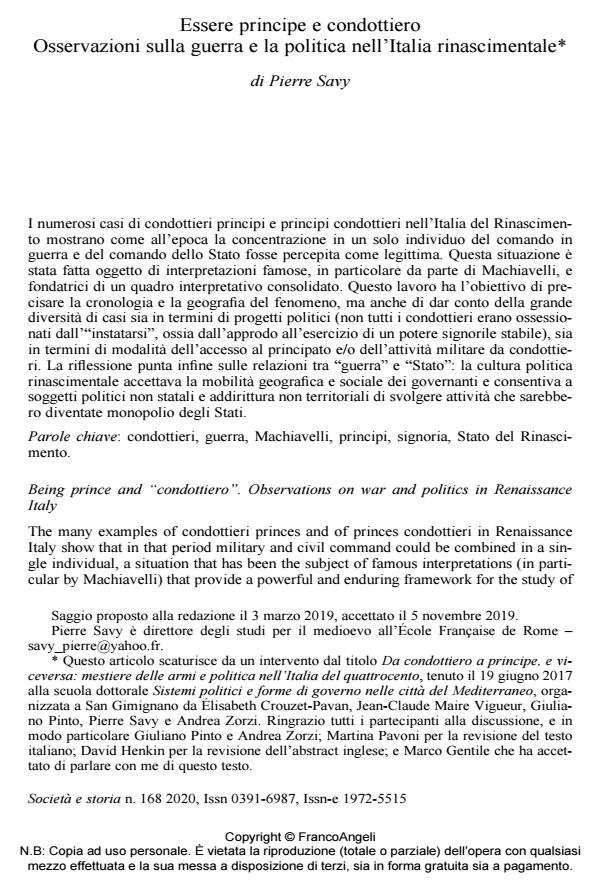Observations on war and politics in Renaissance Italy
Journal title SOCIETÀ E STORIA
Author/s Pierre Savy
Publishing Year 2020 Issue 2020/168
Language Italian Pages 25 P. 319-343 File size 98 KB
DOI 10.3280/SS2020-168005
DOI is like a bar code for intellectual property: to have more infomation
click here
Below, you can see the article first page
If you want to buy this article in PDF format, you can do it, following the instructions to buy download credits

FrancoAngeli is member of Publishers International Linking Association, Inc (PILA), a not-for-profit association which run the CrossRef service enabling links to and from online scholarly content.
The many examples of condottieri princes and of princes condottieri in Renaissance Italy show that in that period military and civil command could be combined in a single individual, a situation that has been the subject of famous interpretations (in particular by Machiavelli) that provide a powerful and enduring framework for the study of the phenomenon. This essay strives to investigate its chronology and geography. It also underscores the great diversity of the political projects of those men (not all condottieri were obsessed with becoming lords of a stable state) and their patterns of access to princedom and military activity. Finally, this paper reconsiders the relations between "war" and "state" by observing critical features of Renaissance political culture, which admitted the geographical and social mobility of political leaders and allowed political subjects even outside the state and its territory to perform activities that are now monopolized by the state.
Keywords: Condottieri, lordship, Machiavelli, princes, Renaissance state, warfare.
- La signoria rurale nell’Italia del tardo medioevo. 4. Quadri di sintesi e nuove prospettive di ricerca Maria Ginatempo, pp.189 (ISBN:979-12-215-0187-2)
Pierre Savy, Essere principe e condottiero. Osservazioni sulla guerra e la politica nell’Italia rinascimentale in "SOCIETÀ E STORIA " 168/2020, pp 319-343, DOI: 10.3280/SS2020-168005